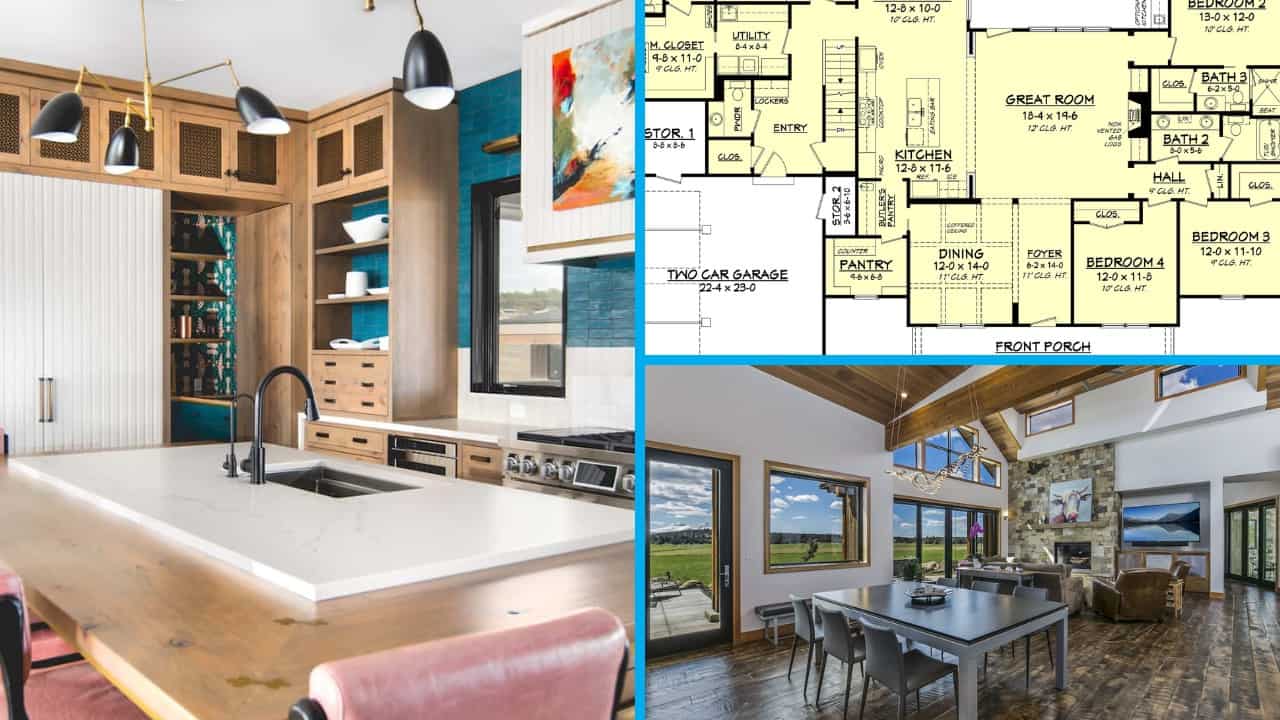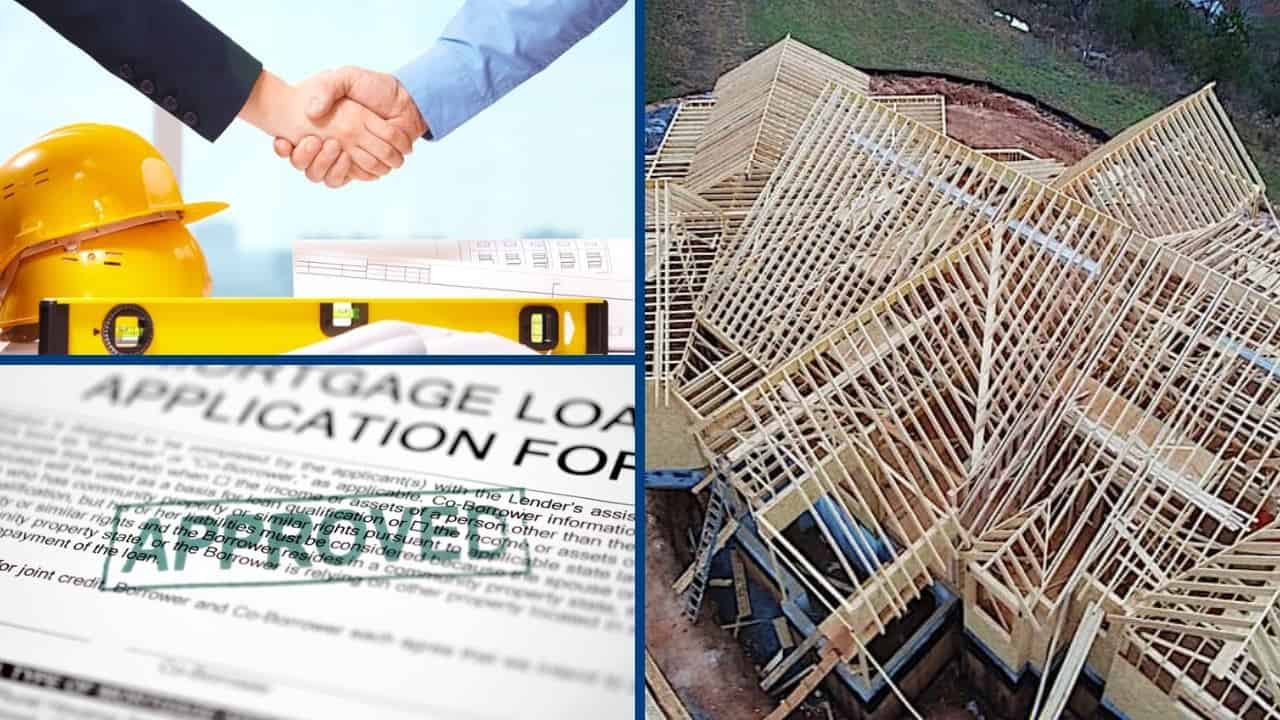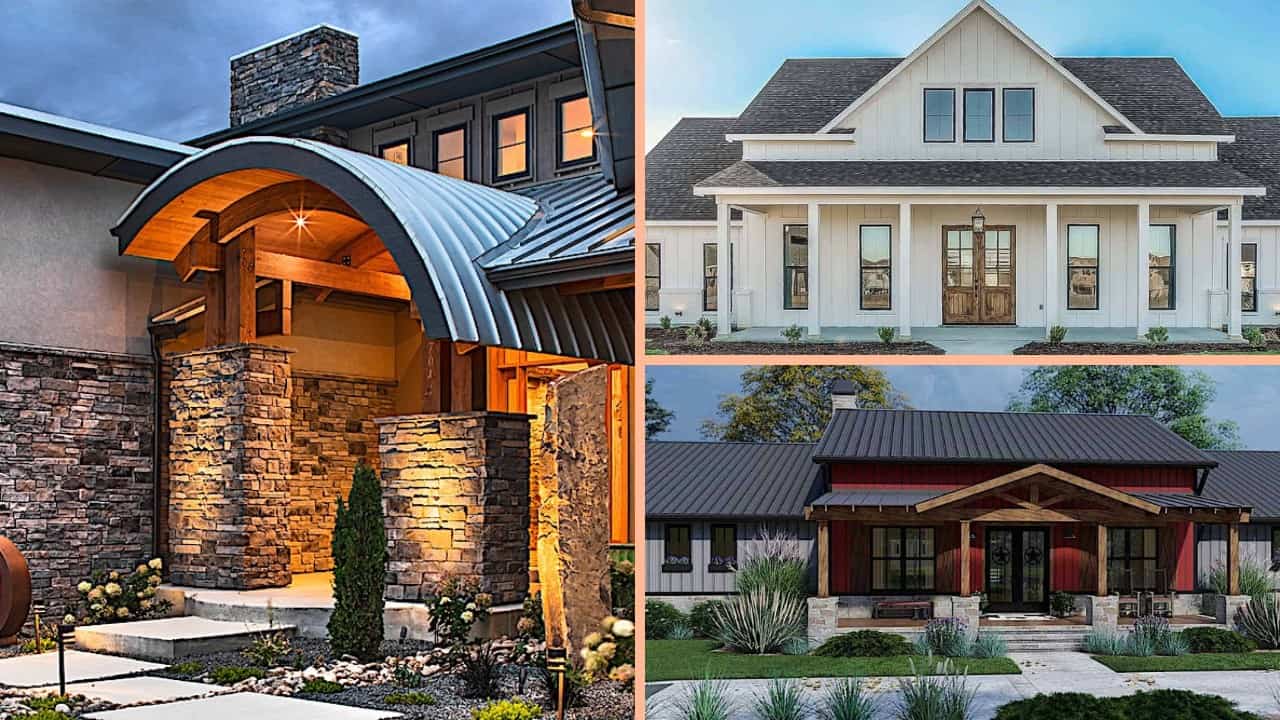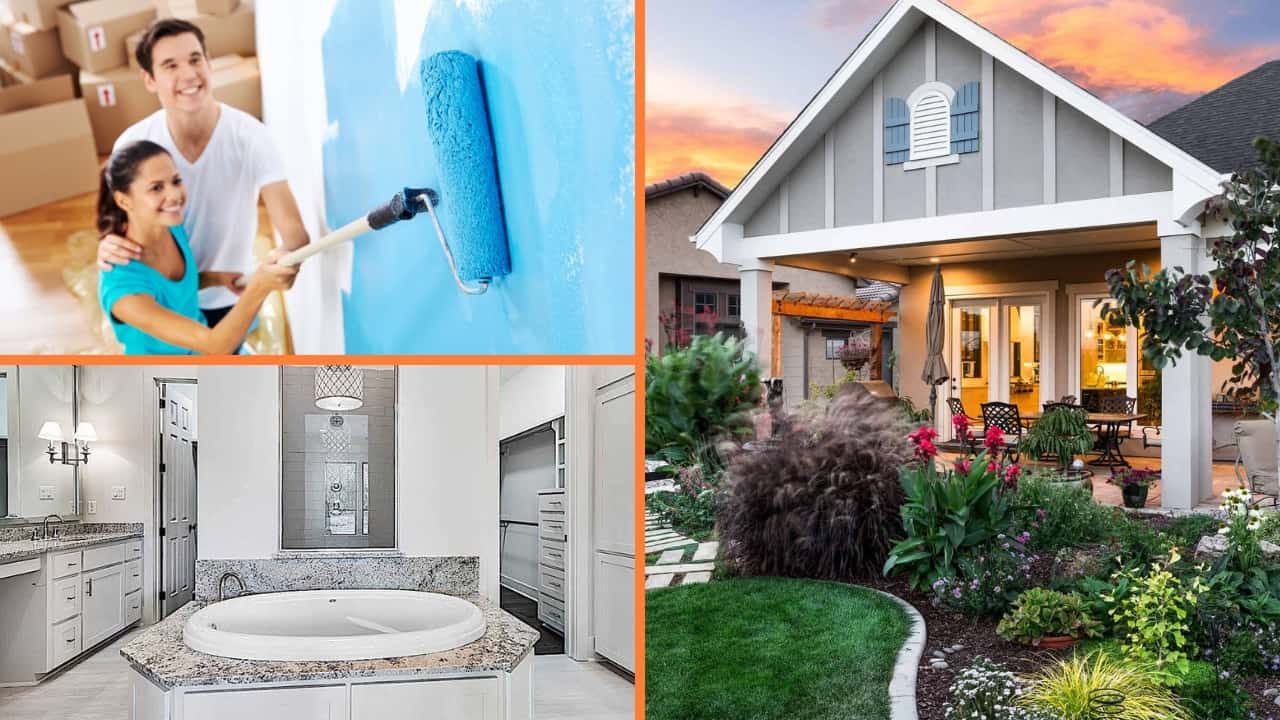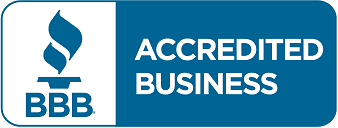Energy Efficient Home Ideas: How to Take Your House Design to the Next Level
By Laurel Vernazza | Updated January 04, 2023
Before the movement toward tiny homes was popular, there was a trend that started it all and still remains – the need for energy-efficient homes. Why go green? Just imagine a world where nature’s untouched beauty reigns—with lush rainforests, oceans with clear blue water, clean air, and animals, birds, and all living things thriving in a safe and beautiful planet Earth.
Since the observance of that first Earth Day in 1970, millions of people worldwide have embraced the concept of protecting the environment and conserving energy. Today, “going green” is a lifestyle.
For at least the past two decades, there has been an increasing demand for energy-smart homes. Architects and builders have responded by using green products like the most energy-efficient windows, doors, roofs, floors, and ceilings. From solar panels to cell-foam insulation and energy-monitoring units, new homes definitely have a “cleaner footprint.”
These homes are designed while considering the impact of the building materials on the environment by using natural resources, recycled materials, and new technologies, all while saving the homeowner money. It’s a win-win!
Green Home Building
According to the Environmental Protection Agency (EPA), an energy-efficient Green Home will add value to your home, help reduce energy use and energy costs, fight climate change, and help protect your health. This website is an umbrella site for EPA and other federal agencies on residential environmental issues. It identifies the key environmental and energy issues at hand, suggesting solutions.
The EPA green home website provides Americans with some very easy-to-use and credible information on how to green their homes, such as:
- Reduce home energy use and use of renewable energy
- Reduce water use and protect water resources
- Select the most environmentally friendly location for a new home
- Choosing greener home building materials and household products
- Reducing waste from home construction and household activities and increasing recycling
- Protecting your health from environmental hazards that occur in homes
One of the many topics of interest among architects today is the proper building techniques for constructing a high-performance home designed to use about 35 percent less energy than a similar new home and about 50 percent less energy than a similar existing home. These high-performance house plans are more than just efficient — they are more environmentally responsible and maintain a very robust sustainable living environment.
In fact, the NAHB and BuildingGreen, LLC have developed a special course that provides builders and remodelers with the latest information and techniques available to build a high-performance home.
A “Green House Plan" will soon be what every homeowner wants because it will be a comfortable, convenient, energy-efficient, and environmentally friendly place to live.
So how do you go about turning your ordinary house plan into an energy-saving, earth-loving masterpiece? Read on.
10 Energy Efficient Home Design Ideas
-
Passive solar heating
-
Frame with 2x6 lumber
-
Use efficient insulation
-
Choose a floor plan with minimal sq ft
-
Utilize all square footage
-
Install efficient windows
-
Install efficient flooring
-
Use Energy Star products
-
Incorporate recycled/green materials
-
Install solar panels
1. Use Passive Solar Heating
If your building site has lots of sunlight, look to use large windows or walls of windows on the homes south-facing side to soak up the heat from that sun and provide warmth in the winter. It’s important to make sure you have some kind of thermal mass, such as a tile, concrete, brick, or stone floor, inside the windows to absorb the heat energy from the sun. The sun is low in the sky during winter, so its warming rays will penetrate deep inside the house through the windows. Conversely, make sure you have strategically placed overhangs or awnings over the windows during summer to block the sun when it is high in the sky. The overhangs – or even blinds or shutters – can provide much-needed shade for cooling in the hot months.
2. Frame with Insulation in Mind
Be sure to frame your roof on top of ceiling joists to provide room for insulation throughout the perimeter of the home. Additionally, consider using 2x6 lumber instead of 2x4s to provide more space inside the walls for insulation. This will increase the R-value – or insulating value – from approximately between R-11 and R-13 to about R-19 to R-21. Other desirable framing techniques are shown below.
3. Energy Efficient Insulation
A home isn’t energy efficient unless it has adequate – or more than adequate – insulation. Use insulation in between walls, ceilings, floors, and other areas of the home. Use caulk to help seal around pipes and other small spaces. Pay close attention to filling gaps around plumbing, electrical wiring and fixtures, windows, doors, and other openings in the homes shell as the air sealing is what makes the home more efficient. Use foam spray to fill large gaps; caulk to fill small gaps; and weatherstripping around finished window and door openings. Unfilled gaps that allow air infiltration compromise the performance of the insulation, wasting energy and money.
Find out the recommended R-values for your building area to ensure you have the correct, most energy-efficient insulation for the job. One of the most important—and easiest—areas to insulate is the attic. In the Northeast, for example, the recommended attic insulation value is between R-49 and R-60. You can achieve those R-values using fiberglass batts, blown insulation (cellulose or fiberglass), or foam spray insulation.
Laying foam insulation before pouring a slab foundation or the slab in a basement is beneficial. The added insulation will reduce heating costs. For a crawlspace foundation, be sure to insulate under the floor well.
In addition, insulated-concrete-block units are gaining popularity as the core construction material for today’s modern homes. Insulated concrete blocks are versatile – decorative, functional, and, most importantly, energy-efficient. Some homeowners in warm climates also grow trees around the home to provide shade from the sun and allow the breezes into the home – and avoid using air-conditioning for as long as possible.
With the house envelope well insulated and sealed, youre close to having an energy-efficient house (about as far as you can go with a house plan). The other decisions involve efficient HVAC systems, including a heating system (furnace or boiler) and an air-handling system (in a well-sealed building envelope). You should shoot for at least 90% efficiency in a heating system. Consult with qualified heating and cooling contractors to match up your house with the correct air/handling/ventilation system. This will ensure that you always have fresh air circulating through the house while preventing your heating or cooling from escaping.
4. Simple, Smaller Home Plans
A home with less square footage and a less complicated design equals a more efficient home to build by using less material and saving on labor costs. A simpler design – without a lot of embellishments, bump-outs, etc. – also makes it easier to fully insulate the building envelope to make it an energy-efficient home by eliminating hard-to-reach corners.
5. Smart Spaces
Pick a home plan that utilizes every square foot. Avoid designs that have little alcoves or spaces that leave you wondering what you would use them for. Don’t just think about the now; think about the future and what spaces you may need as your family grows, such as a bonus room above the garage or a laundry room on the main floor.
6. Use Energy Efficient Windows
Most of today’s homeowners know that they should invest in the most energy-efficient windows, double or triple-pane with Low-E coating on the glass. But homebuilders should also carefully consider window placement in the floor plan. The right windows in the right spot help homeowners cut energy costs in their home plan. In cooler climates, take advantage of the natural light and warmth of the sun by focusing windows on the south and west sides of the house. In warmer climates, focus windows on the north and east sides.
To keep cooling costs down in the warm summer months, use a sun-blocking shade on south-facing windows to reduce the amount of heat let in. Choosing a partial shade or a light color shade with heat blocking properties will still let in natural light.
Another beautiful but energy-efficient window option: clerestory windows—small windows that line the top of the wall, above head level. They let in an amazing amount of natural light — particularly when placed on several walls — while preserving privacy. This design element works equally well for modern or traditional houses.
7. Install Efficient Flooring
There are energy-efficient flooring options available that can improve efficiency and are also made from green materials. Engineered wood flooring is available with a foam backing, or adding a thick underlayment below your wood flooring will help reduce water vapor and prevent heat loss. Insulation under the flooring will also make the floors themselves more comfortable to the touch.
8. Energy Star Products
We know you’ve probably heard this a million times, but just to make sure: buy Energy Star products. Energy Star is a U.S. Environmental Protection Agency program that incorporates voluntary product labeling designed to identify and promote energy-efficient products to reduce greenhouse gas emissions. You can choose from appliances, efficient lighting, heating & cooling, electronics, building materials, water heaters, home office equipment, and more. The labeled products meet certain design and performance criteria and are certified by the Energy Star program to be energy efficient. They will save you money on energy bills and help the environment.
9. Recycled or Green Materials
Look for green materials for your countertops, floors, and fixtures. Green materials may be natural materials; sustainable materials, such as sustainably harvested wood; products that use recycled or recyclable materials; products that use less energy to be manufactured or allow you to use less energy in use; etc.
10. Solar Panels
If possible, consider installing a grid-connected or standalone solar power system. While this may involve an upfront cost, the ability to generate your own energy for your home for years to come will be significant cost savings in the long run. In addition, there are dozens of programs in place nationwide to help reduce upfront costs. Some states also offer special subsidies to help you save on the entire process, while others offer special loans specifically designed to help you purchase solar panels. You can find more details about your state’s policies through the Database of State Incentives for Renewables & Efficiency website.
Other Ways to Go Green in Your Home
- Invest in a programmable or zone-based thermostat to adjust temperatures in the home, conserve energy, and save money on the bill.
- Turn off lights when you leave rooms for long periods of time. The same rule goes for appliances and computers. Consider unplugging them because, especially with cell phones, laptops, and other rechargeable devices, current still leaks through while they are plugged in.
- In the summertime or when days are longer, open curtains and blinds to allow as much light as possible to filter into the home.
The attractive tree-lined courtyard of this two-story contemporary home is all about curb appeal, and the house is all about energy efficiency with its insulated-concrete-block exterior. Inside the home (below), the living-room area remains somewhat bright even as the light outside starts to fade. Only two low-wattage ceiling lights are on (Plan # 190-1004). - Lower the heat during the winter months, and turn up the air-conditioning a notch in the summer to save energy.
- Take it easy on the water, especially heated water. Shorter showers are recommended. Install low-flow showerheads, toilets, and faucets if you don’t have them already
• Love bottled water? It’s cheaper to get a filter and drink tap water.
• Conserving water extends the life of your septic system by reducing soil saturation, along with pollution due to leaks.
• Water conservation helps prevent water pollution in lakes, rivers, and local watersheds.
• Make sure your faucets and pipes are not leaking. Even little drips from leaky faucets can waste up to 20 gallons of water per day. Consider ShowerStart, which saves the water and energy used while waiting for the shower to become warm. A small thermostatic shut-off valve (TSV) is all that’s needed to protect the resources.
• Federal plumbing standards specify that any new toilet must use only 1.6 gallons per flush.• In the garden of your new home, install a rain collection system so that you can use natural rainwater to drench your yard, which lowers your water bill too. According to EarthEasy, your new home can be built with a roof for water containment. Just 1,000 square feet provides about 600 gallons of water during a one-inch rainfall.
• Installing drought landscaping with indigenous plants, which will cut back on outdoor water usage. Avoid grass and flowers that require high water maintenance. Always use drought-resistant vegetation and replace perennials with native plants.
• The best time to water your garden is early in the morning when the loss of water due to evaporation is reduced.
• Use a broom instead of the hose and water to wipe down driveways, sidewalks, and patios.
• Use the correct settings on home appliances such as the dishwasher and washer. Run a full load of laundry every time, but when you don’t have a full load, adjust the settings to use less water.
- If you can, run your laundry on the cold cycle and line-dry your clothes in the spring and summer months.
- Save a tree — or a few. Instead of using paper towels and paper napkins, use dishcloths and cloth napkins.
- Don’t throw out printed paper. Use the other side if possible—at least as scrap paper.
- Recycle glass and plastic bottles, cans, jars; plastic containers; cardboard; paper; and cell phones, chargers, and other electronic devices. Some municipalities have introduced “single-stream” recycling, in which they pick up containers filled with mixed recycling items, making it easier for households to recycle.
These are just simple, painless ways of being active participants in preserving the planet and fostering environmental responsibility. Start by doing the little things, and before you realize it, you’ll be on your way to a “greener” lifestyle.
There are so many different energy-efficient home design options available that we couldn’t possibly list them all. Still not sure if going green is right for you? Reach out to your local designer or builder – they will have plenty of information, especially if they are a certified green professional.
Are you looking to build an energy-efficient home, or are you in the process? Let us know in the comments section below – we’d love to hear from you!
About Us
Find Your Plan
Find Your Plan
Our Services

Offer code valid for 60 days
Sign up and save $50
on your first order
Sign up below for news, tips and offers. We will never share your email address.
Products under $300 excluded.
Thank you for signing up!
To receive your discount, enter the code "NOW50" in the offer code box on the checkout page.










